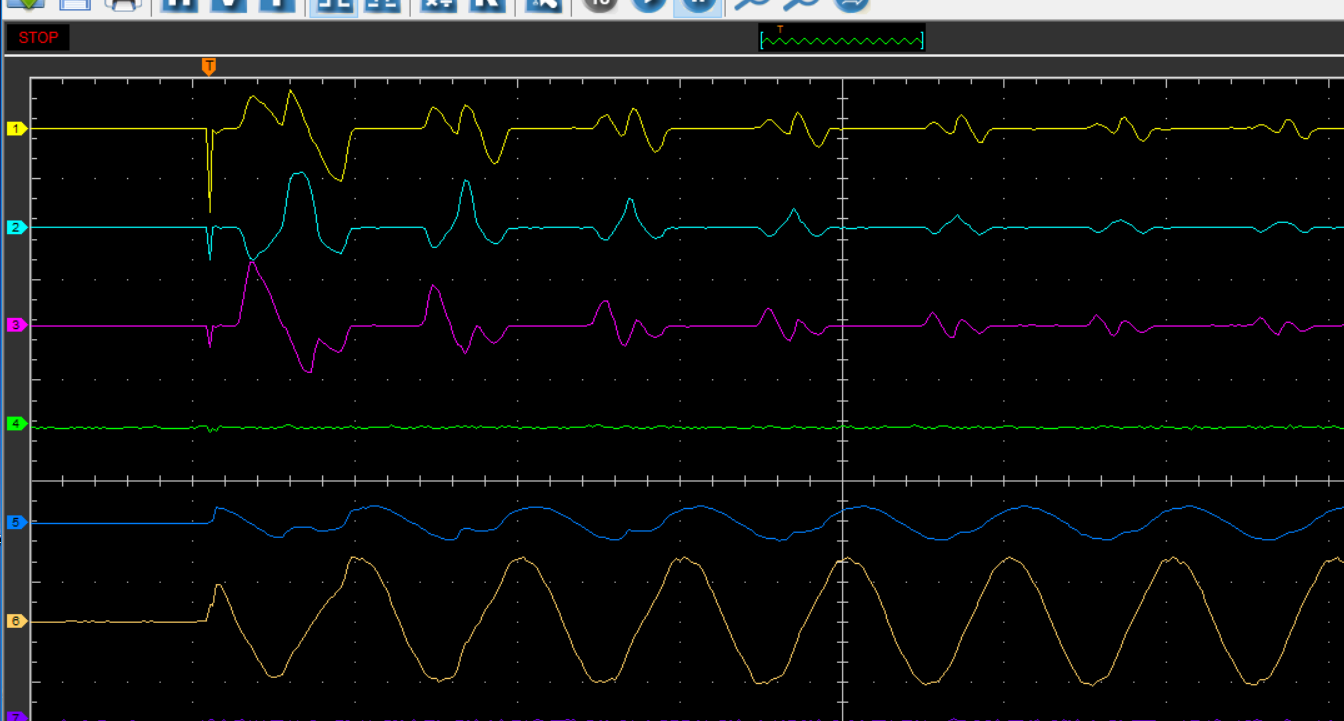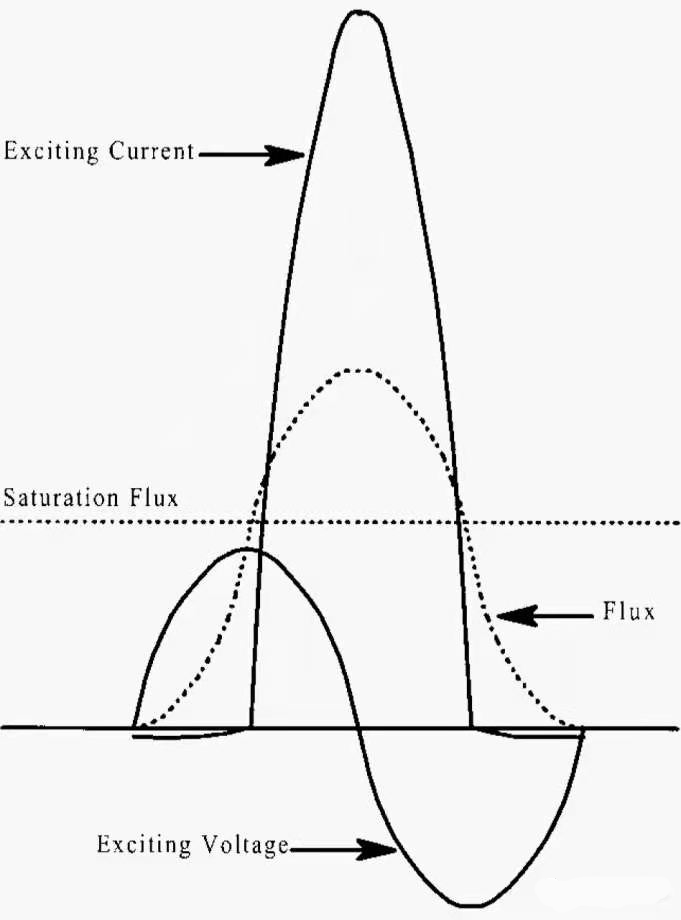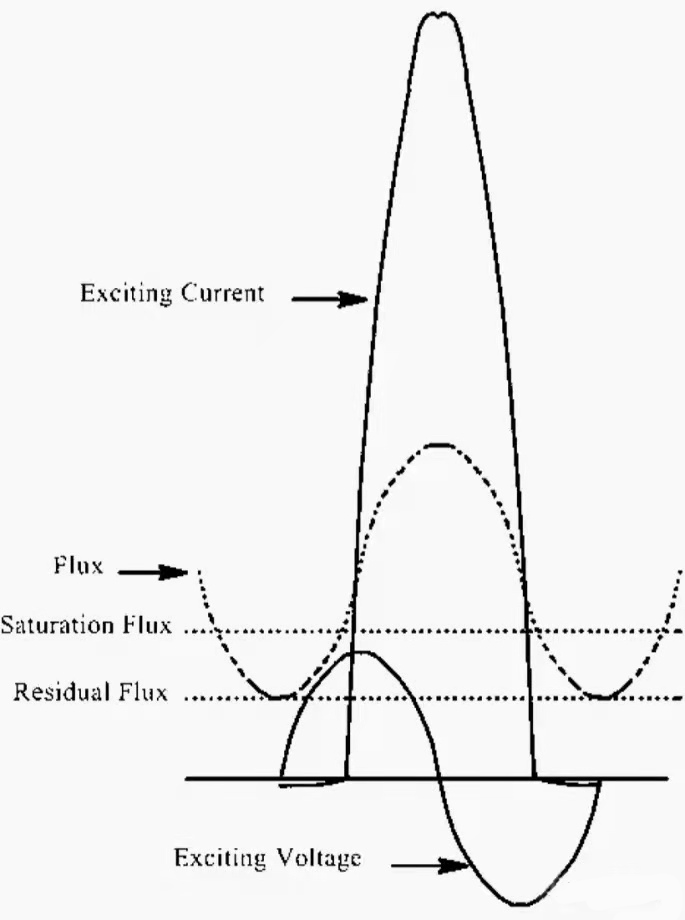When a transformer is first energized, a phenomenon called inrush current occurs. Although the inrush current is generally not as destructive as the fault current, the duration of the excitation inrush current is of the order of seconds (compared to the period with the fault current).

The inrush current situation also occurs much more frequently than the short circuit, so this phenomenon is worth investigating.
Consider what happens when you initially power up a single-phase transformer. The flux in the core is equal to the integral of the excitation voltage.
If the circuit is closed when the voltage passes through zero and the initial flux is zero, the sinusoidal flux will be completely offset from zero. The peak value of the full offset flux is twice that of the symmetric sine wave flux. In other words, the peak flux of the fully offset wave can be nearly twice the normal peak flux, which is usually sufficient to drive the core into saturation.
At this point, the only limiting excitation current is the hollow core impedance of the winding, which is orders of magnitude smaller than the normal magnetization impedance.
Therefore, during the half cycle of core saturation, the excitation current is much larger than the normal excitation current. During the opposite half cycle, the core is no longer saturated and the excitation current is approximately equal to the normal excitation current.

The situation is more extreme when there is a residual flux in the core and the direction of the residual flux is the same as the offset direction of the sinusoidal flux wave. This is shown in Figure 2 below. Note that Figures 1 and 2 are plotted over different proportions of current, so the peak current plotted in Figure 2 is actually much larger than the peak current plotted in Figure 1.

Peak of excitation surge path
In order to find the peak surge current limited only by the hollow reactance, the inductance of the winding is conveniently calculated using CGS units:

Note: N -- Coil turns Amt -- area within the average diameter of coil, CM2L -- axial length of coil, cmL -- coil inductance, μh
The flux produced by the inductor φL is equal to the residual flux plus 2 times the normal flux change minus the saturation flux, since the saturation flux is in the iron. But φL is related to inductance and current:

Therefore, the peak inrush current is expressed in CGS units as follows:

If there were no resistance in the circuit, each successive peak would have the same value and the current influx would continue indefinitely. However, in the presence of resistance in the circuit, the voltage drop at both ends of the resistance will be large and the rise in flux need not be as high as in the previous cycle.
The integral of the voltage drop represents the net reduction in the magnetic flux required to support the applied voltage. Since the I ×R pressure drop is always in the same direction, the required magnetic flux is reduced each period. When the peak flux drops below the saturation value of the core, the surge current disappears. The rate of decay is not exponential, although it is analogous to an exponentially decaying current.
Important! For large power transformers, the surge current can last for several seconds until it eventually dies out.
The line reactance has the effect of reducing the peak surge current by simply adding the inductance to the hollow core inductance of the winding. There is a definite relationship between the insurge current and the short-circuit current because both are related to the hollow core inductance of the winding.
The same flow
There is also a phenomenon known as "sympathetic influx," in which a previously energized transformer shows a sudden change in current when a nearby transformer is switched on. The corresponding surge is caused by the line voltage change caused by the surge current in the second transformer.